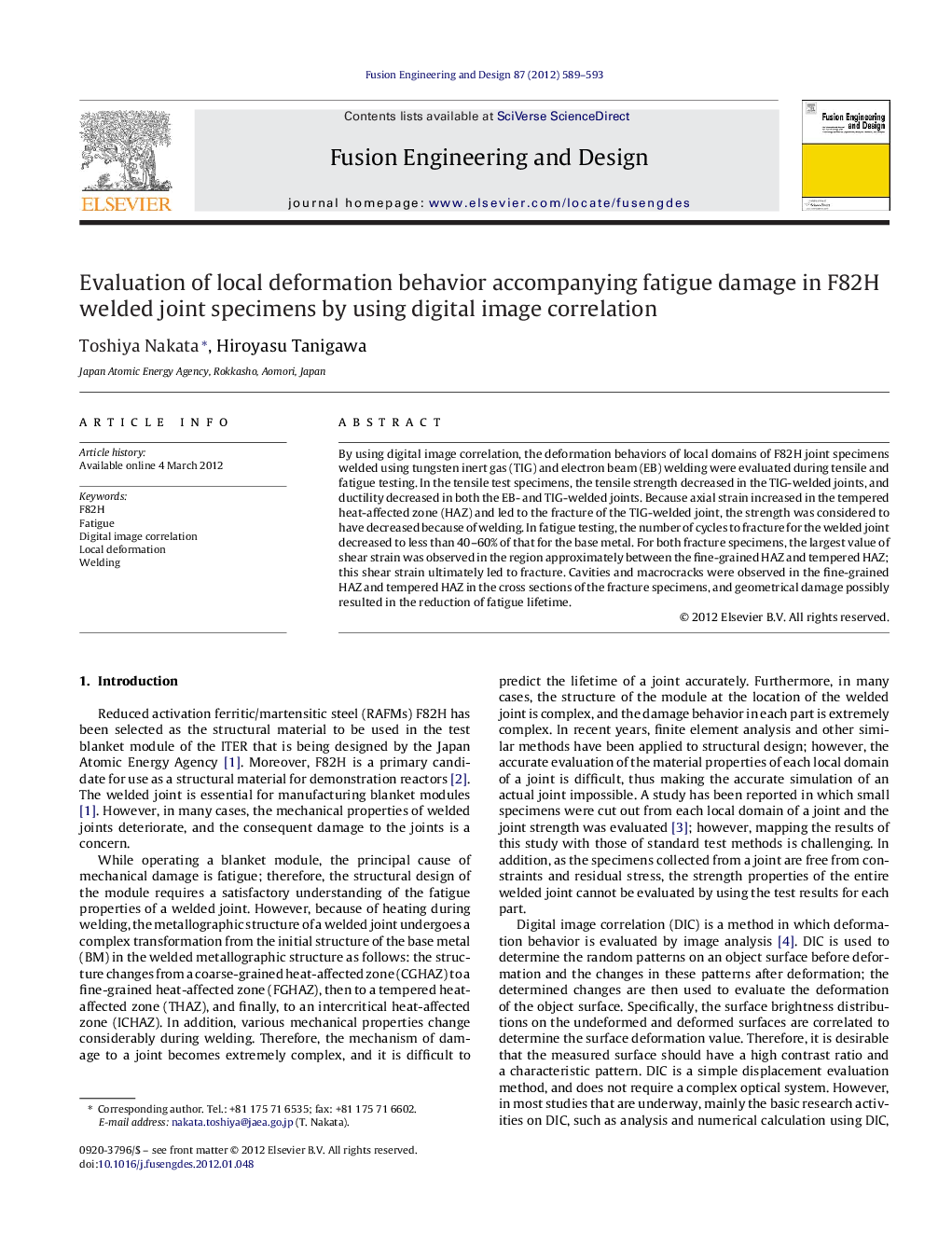| Article ID | Journal | Published Year | Pages | File Type |
|---|---|---|---|---|
| 272235 | Fusion Engineering and Design | 2012 | 5 Pages |
By using digital image correlation, the deformation behaviors of local domains of F82H joint specimens welded using tungsten inert gas (TIG) and electron beam (EB) welding were evaluated during tensile and fatigue testing. In the tensile test specimens, the tensile strength decreased in the TIG-welded joints, and ductility decreased in both the EB- and TIG-welded joints. Because axial strain increased in the tempered heat-affected zone (HAZ) and led to the fracture of the TIG-welded joint, the strength was considered to have decreased because of welding. In fatigue testing, the number of cycles to fracture for the welded joint decreased to less than 40–60% of that for the base metal. For both fracture specimens, the largest value of shear strain was observed in the region approximately between the fine-grained HAZ and tempered HAZ; this shear strain ultimately led to fracture. Cavities and macrocracks were observed in the fine-grained HAZ and tempered HAZ in the cross sections of the fracture specimens, and geometrical damage possibly resulted in the reduction of fatigue lifetime.
► In tensile, the TIG welded joint material was concentrated in the THAZ. ► In tensile, fracture occurred at the point where the axial strain converged. ► In fatigue, fracture occurred at the point where the Max. shear strain converged. ► Many macrocracks and cavities formed in the FGHAZ and THAZ of the cross section.
